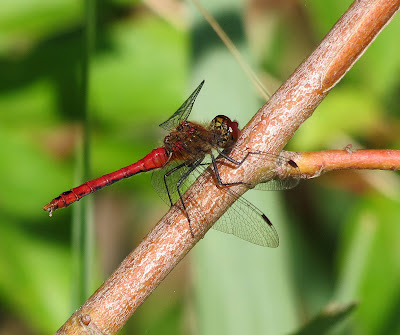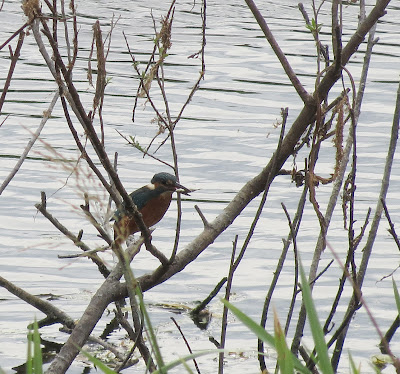I decided to pay a morning visit to Maxey GP, my local patch which has been having problems of late with the water levels. The pump has been broken and the water has been rising and rising, flooding the area and leaving it only suitable for wildfowl. The pump had been mended and the water removed revealing lots of wader habitat, ideal for a juicy rarity or two. On arrival I noticed two waders fly from a nearby spit, one Dunlin sized, the other smaller. On setting up my scope I saw the two birds to be a juvenile Dunlin and a juvenile Little Stint, a year tick and the first in two years.
 |
| The Dunlin is on the left, the Little Stint on the right |
And below, a little video of the two.
At lunchtime I received a call from Mike Weedon and a text from Brian Stone to tell me of a male Common Scoter at Ferry Meadows CP, a PBC lifer for me. I couldn't get there for a few hours and I hoped the bird would linger. I didn't have to worry as the bird was still present on my arrival, showing very well.
A small, black duck that is normally seen at the coast in large flocks, indeed I saw several at my last visit to north Norfolk, but this was the first time that I had seen one in my local area and a male to boot!
My year list now stands at a respectable 172, with my local PBC life list reaching 208.









































